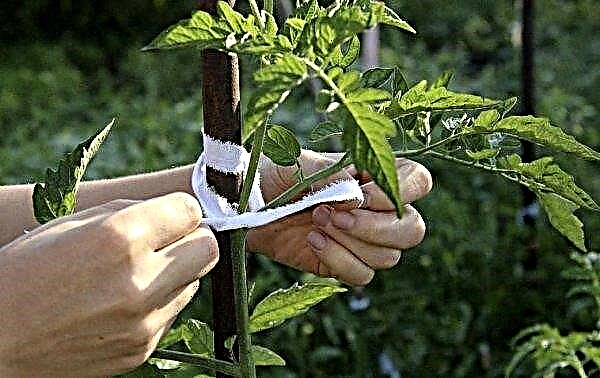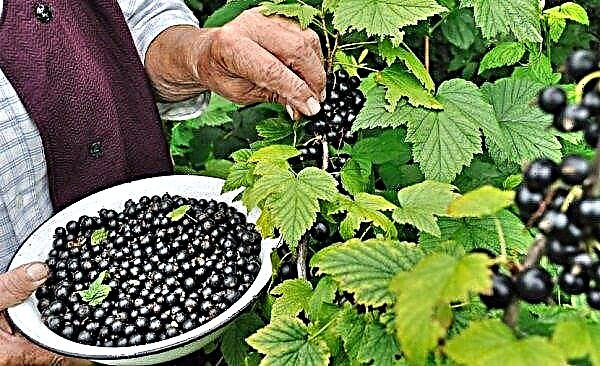To get a crop of vegetables, herbs, berries in the country, not only in season, but throughout the year, gardeners acquire or construct greenhouses. It is in these designs that the correct microclimate is achieved for high yields of garden crops. Today, polycarbonate greenhouses are popular. However, choosing such designs is not easy. In the article you will learn how to choose the most optimal in size and most convenient polycarbonate greenhouse.
How to be guided in choosing the size of the greenhouse
So, if you are reading this article, it means that you have already decided on one criterion for choosing a greenhouse - material. Your choice fell on polycarbonate. Now it's up to the determination of the required dimensions.
When choosing this option, the following factors must be considered:
- The purpose of the acquisition or installation of a protective structure for plants. The scale of the design will directly depend on whether you need it for personal purposes or for doing business, generating additional income.
- Types of plants to be cultivated. This will allow you to decide what should be the minimum and optimal height. For example, for tomatoes, tall rectangular structures of the "house" type are well suited, for pepper, the structure can be much lower.
- The area of the cottage. It is important to choose a good site for placing the greenhouse. It should be even, sheltered from the winds, well lit by the sun. It is desirable that the greenhouse structure is located from north to south in length. This will allow the sun to properly and for a long time illuminate the plants throughout the day. In order to roughly understand what dimensions of the structure you need to count on, we note that for 5 acres you can fit a greenhouse "house" with dimensions 3 × 2 m.
- The construction price and costs that the owner is willing to invest in the maintenance of the greenhouse. Everything is simple here - the larger the design, the more funds you need to invest in it and vice versa. So, for example, a structure with a height and width of 3.5 m and a length of 4 m can cost about 50 thousand rubles, a structure of 6 m long - 65 thousand, 8 m - 80 thousand. In large buildings, respectively, more is needed soil, and more communication costs (watering, electricity).

An ideal greenhouse is one that meets the following parameters:
- reliable;
- durable
- convenient to use;
- durable
- suitable for climatic conditions in the region;
- suitable in size to the area of the summer cottage;
- expandable;
- inexpensive.
If you are interested in how much the standard design weighs, then everything depends on the material of the frame - it will be metal, wood or plastic pipes. For example, the frame of a structure made of arcs with dimensions of 2 × 2 × 2 can weigh about 40 kg, of profile pipes with dimensions of 4 × 8 m - about 120–140 kg. The weight of one sheet of cellular polycarbonate with a thickness of 4 mm is 0.8 kg / m², 6 mm is 1.3 kg / m², 8 mm is 1.5 kg / m², 10 mm is 1.7 kg / m². Standard sheet sizes are 6 (12) × 2.10 m.
Did you know? The likeness of greenhouses was invented in ancient Rome. And modern greenhouses are advanced designs of botanical and winter gardens laid in the Middle Ages in Italy and Germany. They were created for growing exotic plants.
What makes up the total size of the greenhouse
Like any building, the greenhouse has a length, width and height. Manufacturers, when designating the dimensions of the frame, usually indicate 3 digits in this format: 3 × 2 × 2 m (L × W × H). This means that the length of the structure is 3 m, and the width and height are 2 m. Each of these parameters affects the convenience of caring for vegetable plants.
Width
Width is a determining indicator when choosing a greenhouse, as it affects the comfort and convenience when caring for plants.
This parameter will depend on how many beds it is planned to form. The optimal width can be determined, taking into account that the beds should be 45–50 cm wide, and the aisles between them should be 35–40 cm. These parameters will depend on the type of crop grown - seed producers indicate on the package which planting scheme is preferred for a particular plant.
So, let's calculate the optimal width of the greenhouse for growing plants on 2 beds 50 cm wide. Add the width of 2 beds (50 + 50 cm), the width of the passage (40 cm) and the distance from the walls to the beds (15 + 15 cm ) It will turn out 1.7 m. Thus, the minimum width of the greenhouse structure should be at least 2 m.
The width of the doorway should be at least 0.6 m for the movement of only a person, for the passage of equipment (for example, carts), a passage of 0.9–1 m is required.
Height
Height is not a determining factor when choosing a greenhouse. The main thing is that a person can move freely in it. The standard height of the door is 1.8 m. From the top of the opening to the ceiling should be 0.3-0.6 m.
When growing vegetables on shelves, you will need to calculate this parameter so that there is a distance from the ceiling to the top shelf.
The minimum height of the greenhouses that are sold is 2 meters.
Length
The length can be chosen at will, depending on how much the area of the summer cottage allows. If you plan to grow plants on shelves, then you need to consider the length of the pallets. The length of standard greenhouses is usually a multiple of 2 m. However, there are also non-standard designs, for example, with dimensions of 2 × 3, 3 × 3, 3.5 × 3.5, 6 × 6 m.
Most often, rectangular greenhouses are mounted, however, at the request of the owner, they can be square, for example, 3 × 3, 4 × 4.
The greenhouse should not be too long - longer than 6 m. This design is not too convenient, it is difficult to take care of garden crops and maintain an optimal microclimate. If you need a long structure, then it is advisable to divide it into several blocks by walls with doors.
Important! When planting vegetables in a greenhouse, it should be borne in mind that some of them can not grow nearby, adversely affecting each other's development and productivity. About whether it is possible to grow the planned plants together, you need to ask in advance.
DIY installation features for a polycarbonate-based greenhouse
It’s easy to assemble a polycarbonate greenhouse. Typically, the manufacturer along with the details provides detailed instructions on how to do this. A simple small structure without filling the foundation can be assembled by 2 people in 1-2 days, using only a screwdriver or a screwdriver. Most summer residents cope with this task without resorting to professional help.
Video: Assembling a polycarbonate greenhouse
We propose to consider the installation features of one of the most popular models for summer residents - "Weaving". This is an arched structure with dimensions of 4 (6.8) × 3 × 2.15 of a V-shaped profile made of galvanized steel with a thickness of 0.8 mm. It has 2 doors with windows. The frame can be further strengthened and the length increased. The foundation for such a structure is not needed. However, for it to last for a long time, it is better to make a wooden frame or strip foundation.
The total mass of the structure is 60 kg, the disassembled length is 1.7 m.
Important! The installation of the greenhouse must be planned for the period when the air temperature is + 10 ... + 12 ° С. When installed in frost, the plastic bends, and later, upon the onset of heat, expands, which negatively affects the attachment points and requires additional sealing.
In order to assemble a greenhouse, the following steps must be taken:
- Unpack the parts (frame, washers, fasteners, metal corners, tape) and read the instructions.
- Lay them out on the site where the installation is planned. It should be even and well lit. There should be a minimum distance of 2 m from major buildings.
- Attach the arcs to the foundation with anchor bolts or to the ground by tapping their base. The frame should stand firmly, without staggering.
- Connect them using the crossbars.
- Attach doors and windows.
- Cut the polycarbonate of the desired size and shape using an electric jigsaw or a file for metal.
- Attach honeycomb sheets to the frame using galvanized tie straps. If the thickness of the sheets is 6–8 mm, then they can be lapped, thicker polycarbonate - only butt.
- Fasten the sheets at the base.
- Fasten polycarbonate to doors and windows.
- Seal joints with sealant or aluminum tape.
- If necessary, tint non-aesthetic elements with special polycarbonate paint.
Video: Assembly instruction for the Sotka greenhouse
Good examples and options
From this section you will learn what greenhouses are and which of them are most convenient for summer cottages.
The best option for a small cottage is a polycarbonate structure with a length of 2.5 m, a width of 2 m, a height of 2 m and a low wall height of 1.5 m. If you plan to equip the shelves on both sides, then choose larger structures - with a width of 2.5 . The best length in this case will be 3 m.
If you plan to equip the greenhouse for personal purposes, then a family of 4 will have enough of a structure covering an area of 20 m². She will easily become in the area of 7-10 acres. The optimal size is 3 × 6 m.
There are universal greenhouses on sale, the width and height of which are standard, and the length may vary depending on the model.
For instance:
- “Udachnaya-2” (2 × 4, 2 × 6 and 2 × 8 m);
- "Country" (3 × 4, 6, 8);
- Udachnaya-3 (4 × 6 m).
A greenhouse made of cellular polycarbonate “Profi” (8 × 7 × 3) is perfect for doing business.
Often manufacturers already in the title lay down for which particular culture this design is suitable. So, on the market there are greenhouses "Cucumber", "Perchik", "Perchina", "Tomato", etc.
For regions with a cold climate and snowy winters, you should look for reinforced structures, which usually have dimensions of 3 × 6 m, occupy an area of 18 m². Their frame is made of galvanized steel pipes with a diameter of 20 × 20 or 25 × 25 mm. They withstand increased snow loads - 334 kg / m². Serve 20–25 years.
Video: How to collect the Udachnaya greenhouse yourself
For the cultivation of a large number of plants, it will be necessary to assemble large structures, for example, 3 × 6, 6 × 12 m.
For growing seedlings, herbs, flowers and low crops (peppers, eggplant), mini-greenhouses made of cellular polycarbonate with dimensions of 2 × 1.2 × 0.8 are well suited. Such compact designs can be easily installed even in an apartment on the balcony. They have no doors and windows. Ventilation and plant care are carried out through a raised roof. Such constructions can weigh 25-30 kg. They are easy to install on an area of 5 m². By the way, everyone can afford greenhouse mini-constructions. The price starts from 6 thousand rubles.
Did you know? In the Renaissance, greenhouses were called "houses of oranges" from the name of citrus fruits, which were often grown in those days. Glass structures were available only to very rich people because of the high cost of flat glass.
So, a polycarbonate greenhouse is an excellent option for growing vegetables, berries, seedlings, greens in small and large summer cottages, for your own use and for sale. Today, there are many designs with various shapes and sizes. You can collect them yourself or use the services of professionals. A simple design can really be assembled by 2 people in 1-2 days, using only a screwdriver or a screwdriver.













